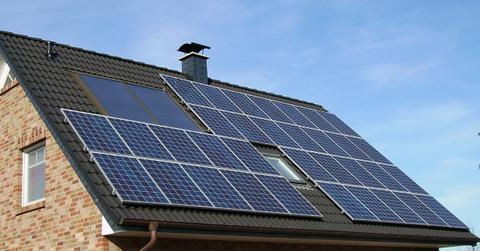California To Invest $1 Billion In Solar For Low-Income Housing Units
California’s Multifamily Affordable Housing Solar Roofs Program will allocate up to $1 billion to provide more than 200,000 low-income housing units with solar panels and energy-storage banks.
Updated Nov. 19 2020, 9:39 p.m. ET
Too often, options for going green are reserved for the wealthy. Switching to smart heating systems, solar or wind power oftentimes come with hefty up-front costs. And for those of us who rent instead of own property, installing alternative energy systems is out of the question.
California’s Multifamily Affordable Housing Solar Roofs Program has found a way to mitigate that by reinvesting money raised through the state’s gas cap-and-trade program into solar power for multi-family, low-income housing units.
The solar roofs program was designed in part by solar provider Everyday Energy, a firm serving low-income. Focused on owners of low-income housing units, the bill outfits low-income properties with solar so savings can be passed along to renters living there.
Solar for low-income housing opens up participation in the green economy. 
“The purpose of it is to provide affordable housing owners with a rebate that will encourage them to place tenant-benefitting solar on their property so that low-income tenants can participate in the green economy and get a lower electric bill,” Scott Sarem, CEO of Everyday Energy, told Yale Climate Connections.
In addition to reducing electric bills for residents, the legislation provides low-income properties with self-reliance during storms or other natural disasters that may disrupt out the electrical grid. It's a similar project to one happening now in the United Kingdom; where Netherlands-based Maas Capital has invested £160 million to install solar energy in 800,000 low-income homes.
“In an era where climate change is taking place all around us, resilience becomes a critical need,” Sachu Constantine, director of policy at the Center for Sustainable Energy, told Clean Energy Finance Forum. “We don’t just want to leave low-income communities to the vicissitudes of the market."
California’s bill is the largest of its kind. 
Prior to the Multifamily Affordable Housing Solar Roofs Program going into effect in 2016, “only 4 percent of low-income households within the state had been served by the renewable-energy programs,” Waite told Clean Energy Finance Reform. The low-income sector includes more than 450,000 households throughout California. The state is home to more than 9 million low-income people, according to Waite.
“This program employs a tenant-first strategy,” Waite said. “Tenants must receive a direct economic benefit through the utility tariffs that are established. There’s also an avenue for tenant participation and contributions to financing these systems through on-bill financing or on-bill repayment.”
The program is expected to reach renters in more than 200,000 units. California’s governing body has pledged up to $100 million every year for the next four to 10 years.
The key to California’s new bill? Storage. 
Central to the Multifamily Affordable Housing Solar Roofs Program is energy storage with battery banks. Storage allows the housing properties to maintain power even when the grid is down—something that can save lives in the event of a dangerous heat wave.
“The initial capital cost of a storage system is about $100,000,” Seth Mullendore, project manager at Clean Energy Group, told Clean Energy Finance Forum. “It’s an 85-percent increase in savings for a 30-percent increase in cost. You can optimize the amount of solar you’re consuming and really hit those peak time periods.”
Those savings get passed along to property owners, but they especially get passed on along to tenants—for whom an extra $50, $100, or $150 a month can make a marked difference in lifestyle.
“I think it’s extremely important to come up with policies that provide enough of an incentive for an owner to act so that the tenants can benefit,” Sarem told Yale Climate Connections.
